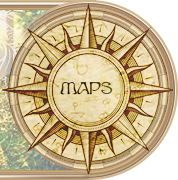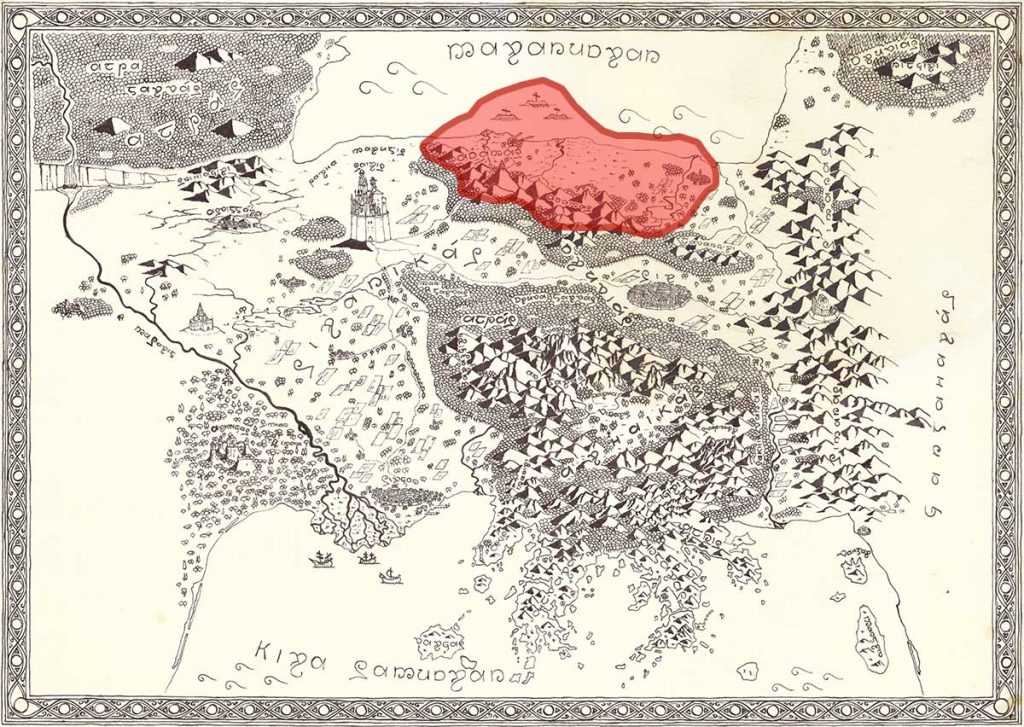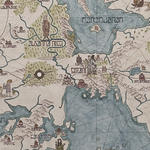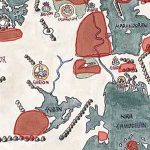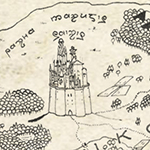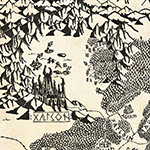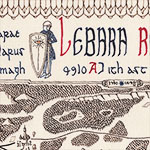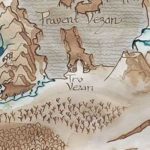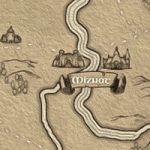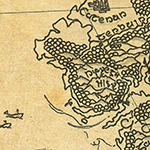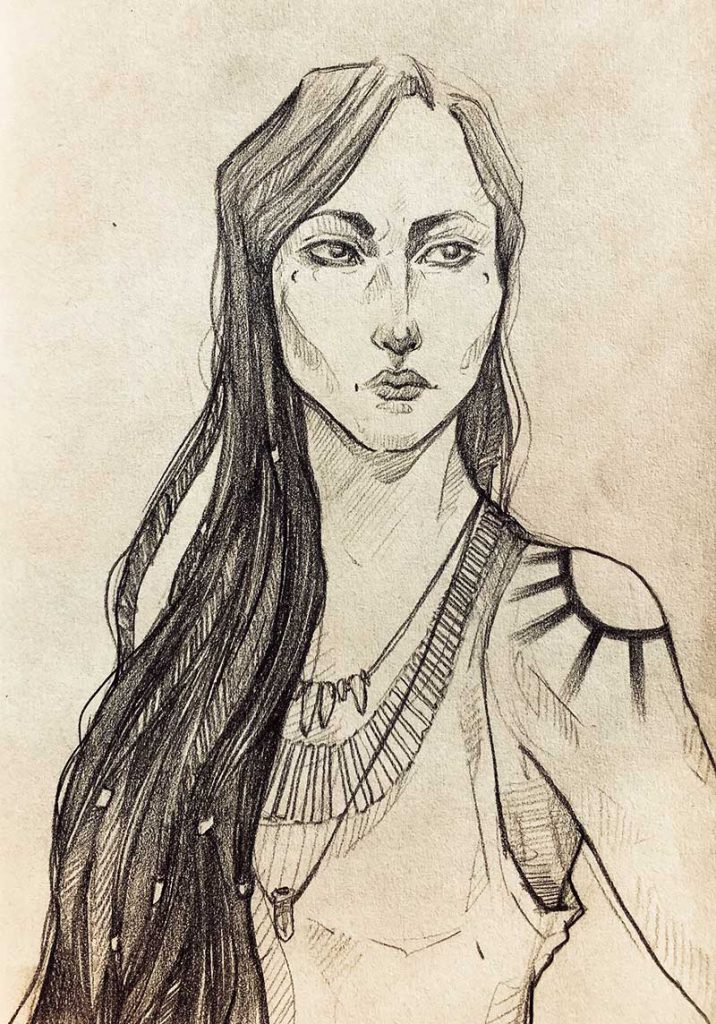
The Adamantians are the inhabitants of the country of Adamas ruled by Adamas from his seat at Mount Adamas. This somewhat self-centred (as is obvious from the nomenclature) Maghavanian renegade usurped a piece of land in the north of Sirania after defeating the local priest-king sworn to dark magic. It was relatively easy for Adamas to win the favour of the people as almost any ruler seemed a kind-hearted saviour compared to the sorcerer who had lorded over them before. The priest-king habitually required human sacrifice and literary sucked the blood of his subjects in the form of a monstrous vampire. He also forced the people into invoking hellish beasts, demons and Zilaths.
Adamas defeated the sorcerer in a grandiose magic duel that – owing to the dramatic light effects and the fact it took place in the sky directly above the capital – was witnessed by a large number of the population. Adamas, emerging victorious from this formidable fight, wowed to protect the people against similar-natured dark sorcerers and promised to grant them freedom to practice their old traditions if they agreed to accept him as their ruler. In this role, he then created a state apparatus able to function without his intervening, and after several decades of repairing the decimated land and its tortured inhabitants retired into his Adamantian tower at the top of the highest mountain. There he dwells till this day, usually no longer interfering with the affairs of state. Nonetheless, he greatly enjoys attending public holidays where he is generally courted by all and can boast his majestic appearance, his position of power as well as his elegant manners.
The Adamantians ranks among the nations united rather by place of residence than by hereditary traits. They do belong to the race of Niviim but are in fact of mixed blood. Depending on the dominant addition to the Nivian heritage, there are three main subgroups to the Adamantian nation – the Forest folk, the Bog folk and the Field folk.
THE FOREST FOLK
The blood and features of the Forest folk are a mixture of those possessed by the ancient Siranians, the Wood Elves and the High Elves. The Forest people are the wise protectors of the South Adamantian woods as well as experienced mountain dwellers. On the northern slopes of the mountains grow splendid forests filled with many sacred groves, sanctuaries, springs and places of ancient cults whose origins are now beyond memory. The Forest folk tend to them and maintain their tradition.
The Forest folk, perhaps owing to their ancientness, perhaps because they are somewhat more similar to the neighbouring Siranians than other Adamantians, also go through the process of Division, though on another level. Where the Siranians experience the drama of Division into the White and the Dark, Forest Adamantians face the challenge of Division into Men and Women. Naturally, such division is to an extent experienced by all the races with two reproductive sexes but in the case of Forest Adamantians this is conceptualized as the principal mystery and sacred quest of their culture. The solution to the Division is found in two traditions.
Vigin: A tradition whose followers, be they men or women, strive to achieve in themselves the unification of the two genders – to simultaneously become a man and a woman, thus surpassing the division. A complex training and education, celibacy and much more are all part of this tradition. However, the person who becomes a Youth or a Maid achieves inner harmony, loses their yearning for the other sex and lives on in peaceful joy. Only few manage to reach such state and are much respected. Once they achieve their goal, they are no longer bound by celibate and theoretically can have children, though not many of them choose to.
Man and Woman: This tradition lies closer to ordinary life. People attempt to find unity in a harmonious couple. They try to fulfil their roles and perfectly connect with their gender counterpart, thus finding harmony and surpassing the separation/division. Their culture has a wide range of rules and methods on how to practice this interconnection, and the everyday life of a couple thus becomes one long, constantly perfected dance or ritual. Unlike with Youths and Maidens, in this tradition, producing offspring is expected and is a part of the dance.
THE BOG FOLK
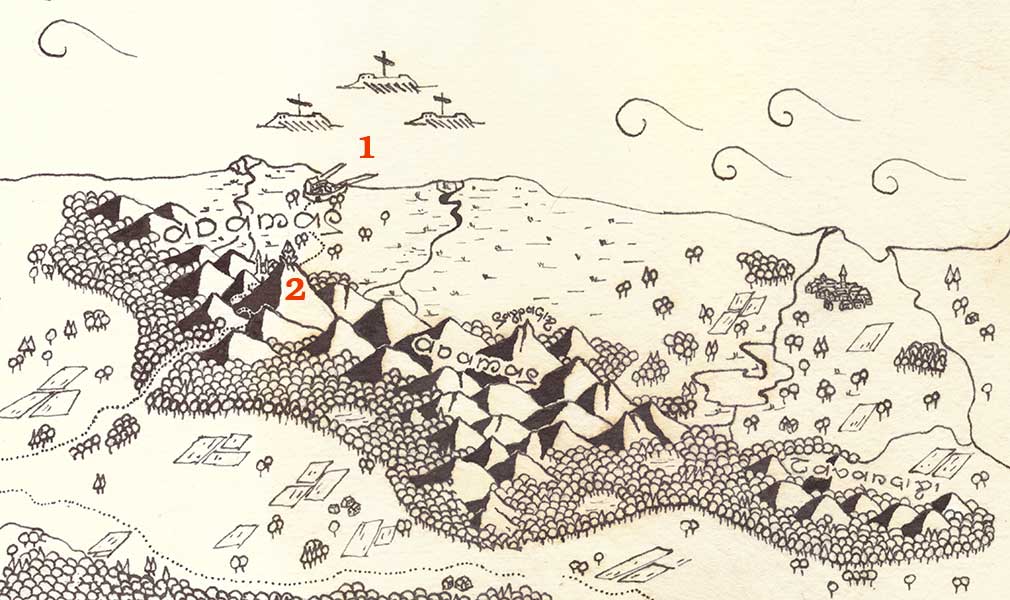
The Bog folk live in shacks on poles and they are the only ones able to navigate in eternal mists and marshes surrounding the country of Adamas in the east and west. They emerged through the mixing of the ancient Niviim with the aboriginal population of the bogs.
The Bog people have a special, more intimate relationship with Adamas the Ruler: a long time ago, Adamas offered to present each inhabitant of the country with an adamantium ring to be used as a proof of citizenship and also as a protective magical tool. The protection, however, would come at the cost of surveillance as all adamantium in the world is connected to Adamas through magical resonance. The free-thinking Forest and Field folks refused the offer with thanks but the Bog people decided to accept the proposition. The marshes swarm with dangers and they were tired by the constant loss of life occurring despite their caution and knowledge of the treacherous places. They could use magic protection. Some jeerers say that perhaps, Adamas eventually came to slightly regret this bargain as the every-day protection of the Bog folk is costing him a lot of strength, but there is little scheming and politics in the swamps to be usefully eavesdropped on.
The Bog Folk are said to control the magic of mists, water and illusions, and they can remain unseen if they wish. They are known for their strength and agility. Many times, the land of Adamas has found itself under attack. The attacks led through the bogs have never succeeded. The legends and rumours also claim the men of the Bog folk are repulsive and unsightly but the women are very beautiful. Their skin is pale and their hair is black and they are knowledgeable of bog-herbs.
THE FIELD FOLK
The folk of the fields resemble the white Siranians but their features betray an influence of the Elves, Gandharians and Dorns. Many of these influences come from the sea, the Field folk living in the closest vicinity of it. There is a certain rhythm of life among the Field folk – after spending several years at school (Adamas introduced public schooling in this part of the country), most of the young (both men and women) are drawn to the sea where they spend the days of their youth in work and adventure. Once they reach adulthood, seafaring having provided them with some means, the sailors yearn for the shore – some quiet corner on dry land, a little field or perhaps an orchard. They return just in time to inherit a house from their tired parents, who leave for the mountains where they can meditate in preparation for the old age and death.
Thus there is a traditional four-age division (excluding the early childhood spent with the family in the country).
- Town Age, c. 8-16 – spent attending school in the city (where the children are collectively housed)
- Sea Age, c. 16-25 – spent at sea, working on ships, trading
- Village Age, c. 25-50 – spent in family life on the family acreage
- Mountain Age, c. 50–death – spent in a hermitage in the mountains
Naturally, not nearly everyone lives according to this ideal pattern. Especially the departure to a hermitage is often postponed and many end up living with their families, cared for by their children, for the rest of their lives. Leaving for a hermitage is nonetheless deemed a worthy deed and the family considers it a great honour and a duty to ensure livelihood for the hermit. Some hermits are self-sufficient while others would not survive without the supplies provided by their families.
The experience at sea is considered crucial and no youth or maiden would miss out on it. School children constantly tell each other largely embellished stories about all the great adventures one can experience at the sea and the horrible dangers waiting there. Those who do not venture at sea are often considered cowards – they have listened to tales of monsters and taken fright. The reality of seafaring is naturally quite different to fables and legends; the work on board of a ship is hard and dull, alternating with long days of boredom. Nevertheless, the sailors tend to come back with a bagful of great stories they very gladly add to the already existing student folklore.
The crews of the Adamantian ships are mixed, as in this sense the Adamantians are respecters of equality. However, if a girl gets pregnant, she must marry the father of her child; at the earliest stop in Adamas, both she and the boy must leave the ship and their seafaring adventures are over. Those who come to love seafaring are therefore careful and practically become celibate, while for those who soon find themselves fed up with the sea and find love onboard it is an ideal way of weaselling themselves out of the misery without being accused of cowardice.
